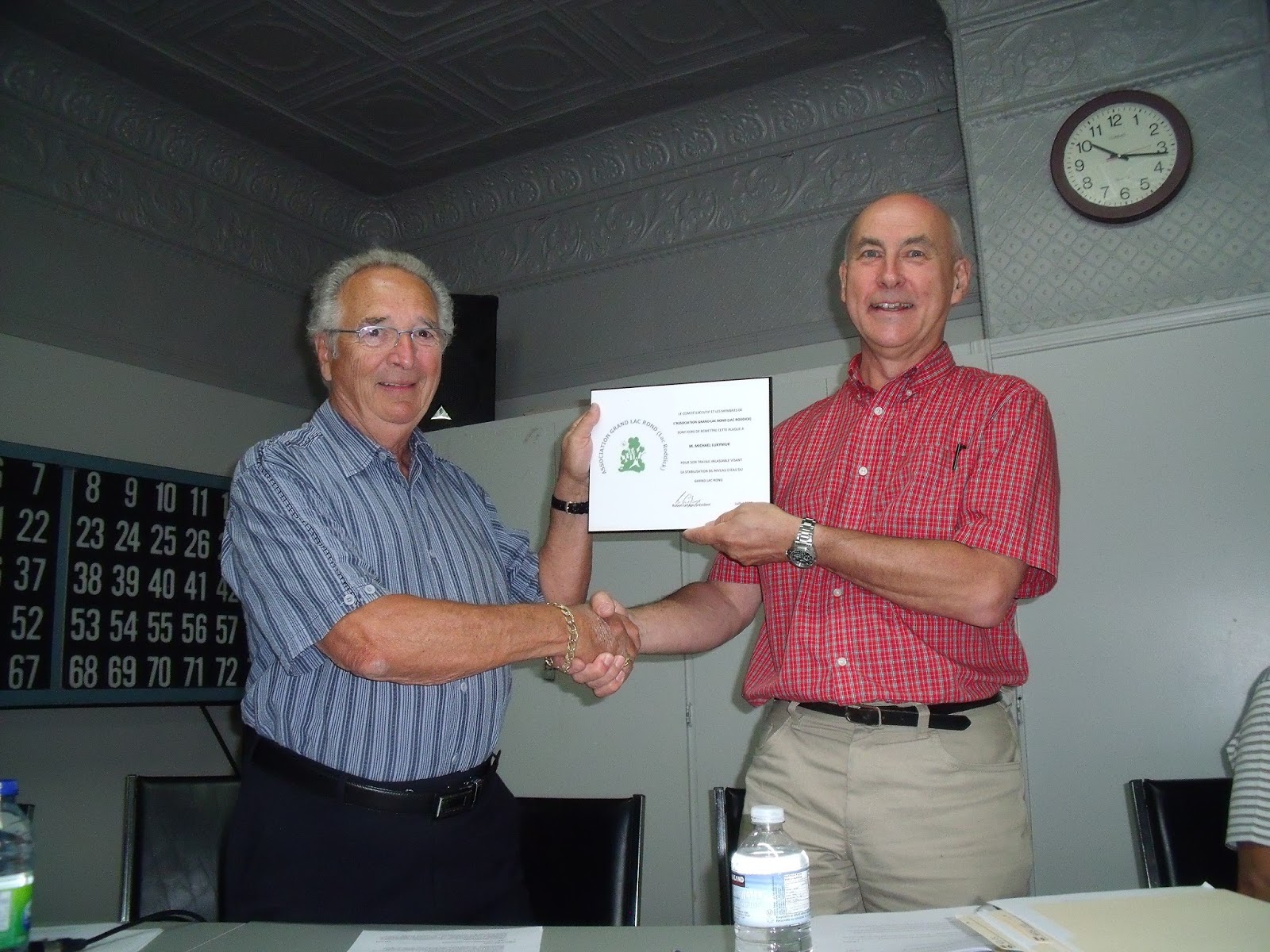Water Level Monitoring
Measures taken and reports produced by Michael Lukyniuk
Check the menu on the right for reports by year
At the Annual General Assembly of 2013, President Robert LeSage presented a plaque to Michael Lukyniuk in recognition of his work to stabilizethe water level of Grand Lac Rond. This recognition was suggested by members at the meeting in July 2012.
THURSDAY, AUGUST 8, 2013
Stabilization of water level
Report by Michael Lukyniuk at Annual Assembly, 2013
Last year, the provincial water agency – the Centre d’expertise hydrique du Québec – agreed to change the operation of the dam at Lac 31 Milles on a trial basis and to take measurements of the water levels on the Gatineau River, our lake, Petit Lac Rond (aka, Lac des Pères), and Lac Michel. This was done after our Association presented persuasive data and arguments demonstrating that the stability of Grand Lac Rond was being compromised through the operation of the dam – in the spring and fall, discharges from the dam flood Grand Lac Rond; and in the summer, the retention of water by the dam results in the lake being drained by a creek into the Gatineau River.
The response of the CEHQ was very positive. Our Association also received encouraging messages from the President of the Association pour la protection du Lac des 31 Milles who supported our requests.
In 2012, we saw that the CEHQ stopped the spring discharge from the dam one month earlier – which may have been the reason why we were not flooded in April and May 2012. Throughout the summer of 2012, there was less precipitation than normal – and water levels were low but stable. The levels could have been lower but the CEHQ released a continuous flow of water from the dam. Normally, the CEHQ drops the water level on Lac 31 Milles in September to assist the spawning of lake trout there. Unfortunately, this has often resulted in flooding on Grand Lac Rond. In 2012, the CEHQ began the discharge gradually in mid-August so that there was no flooding on Grand Lac Rond. (The level only rose by 27 cm in 2012 versus 52 cm in 2011 and 59 cm in 2010!) Water levels were optimal in October 2012 due to discharge and precipitation, and dropped gradually over the rest of the year.
During the winter of 2012-13, there was no presence of red algae contrary to the case in 2011-12. We suspect that this was because water levels were higher and that there were healthy levels of oxygen in the water.
The spring of 2013 saw considerable flooding on Grand Lac Rond due to a lot of snowfall during the winter and heavy precipitation in the spring. This year, the CEHQ only stopped the spring discharge in mid-April because of dangerous water volumes. To the end of June, water levels were extremely high on Grand Lac Rond.
The CEHQ has confirmed that it is continuing to monitor water levels in our water basin and that it is still testing the operation of the dam. At the end of the year, it has promised to share a report on its findings with the Association’s Board of Directors.
The instability of water levels on Grand Lac Rond has been going on for decades to the detriment of the lake – the shoreline is threatened by erosion, the warming of low water levels encourages the growth of damaging aquatic plants and bacteria, and fluctuating levels pose hazards to boating and inconveniences to residents. While it is not possible to control precipitation, it is possible to manage man’s influence on the water basin.
The health of my lake...my responsibility!


